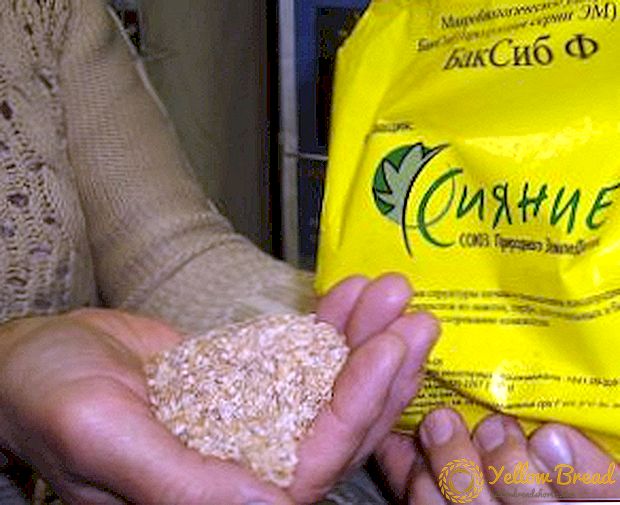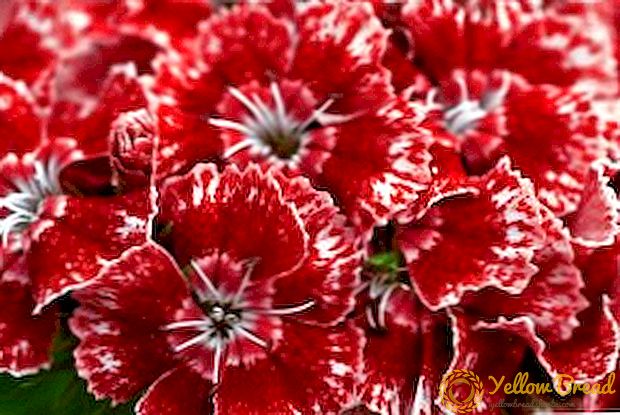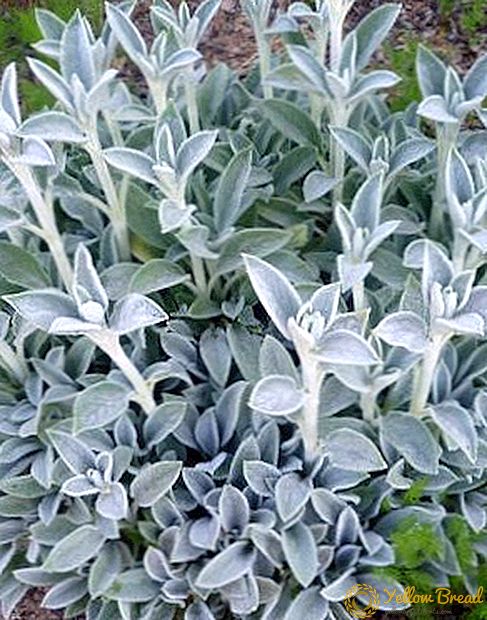
Moths are small and seemingly innocuous butterflies, which in fact are malicious pests.
They are able to bring into complete disrepair furniture, furs, plants, food.
To prevent serious losses, you need to know well what is a mole and respond in time to its attack.
Types of moths: photo and description
All members of the family are divided by food addiction. There are the following varieties:
- wardrobeeating woolen things;
- grain (food), which prefers cereals (more on the fight against food moths);
- furnituredamaging wood, upholstery and interior furniture;
- mushroom (fruit)attacking dried fruits, nuts, dried mushrooms;
- fur coatfeeding exclusively on natural fur.
- waxliving in bee hives. Tincture based on its larvae has a number of medicinal properties.
In addition, there are moths that eat garden and garden crops, field cereals.
Cabbage
Small but very dangerous insect, the enemy of all cruciferous plants.
Imago. The wingspan does not exceed 15-17 mm. The colors are dominated by gray, brown and chestnut shades.The front wings are decorated with a light wavy border, the back - a long fringe.
Egg. It has a bright lemon or light green color, oval shape.
Larva. Initially devoid of pigmentation, with age, first painted in green, and then in a dark brown color. The caterpillar of the last age has a length of about 1 cm.
Damage caused by caterpillars of all ages. They are very voracious, actively damage cabbage heads, mustard, radishes, swede, radish. As a result of their activities, vegetables lose their marketable appearance, deteriorate quickly, and are poorly stored.
Features of the form. Cabbage moth - cosmopolitan, distributed throughout the world. It can be found almost everywhere.


Poplar
Lives, feeds and breeds in the poplars. The peak of activity occurs during the formation of down. Together with him, the mole often flies into the house.
Imago. A very small butterfly with a wingspan of no more than 1 cm. The front wings feature a variegated multicolor color with a predominance of pink, brown and yellow shades.The rear wings have a monochromatic light chestnut color, decorated with a fringe on the edge.
Egg. Beige, oval, slightly flattened at the sides.
Larva. The caterpillars of the first generation are painted white, sometimes yellowish, with age the covers darken and become chestnut-colored.
Larvae moth eat poplar leavesby nibbling big holes in them. As a result, the leaves dry and fall. Once in the living room, butterflies fly to the light and accumulate around bright objects.
The poplar mole is found throughout Russia and Europe. Adult lives about 3 days, manages to make 3 eggs laying during this period.


Wool
Quite common pestliving in residential premises, warehouses of furs and woolen clothes, museums and mills.
The wingspan can reach from 1 to 2 cm. The front wings are painted in a light brown tone, are cast in golden mother-of-pearl, the rear wings have a uniform beige color and are trimmed with a fringe on the edge.
The egg is very small, almost impossible to see with the naked eye. It has an ellipsoid shape and whitish color of the integument.
Caterpillar. The length of a colorless transparent body can reach 8-10 mm. The head is colored brownish yellow. Because of the structural features of the limbs moves very badly, so more often immobile.
Larvae of this species eat exhibits of museums, any products made of wool, sugar, flour products, grain and bran. Of course, completely caterpillars can not eat the thing, but they are quite capable of spoiling the appearance, gnawing through noticeable holes. Products that have been attacked become unusable due to contamination by moth feces.
The wool moth is a cosmopolitan, keratophage, and Sinanthropus. Very prolific! One adult female can lay over 70-90 eggs in her short life. A week later, her offspring will come out of the eggs and begin its development.


Apple
Pest from the family of ermine moles, inhabiting mainly on apple trees.
The body is very light, almost white.. The front wings are whitish, decorated with longitudinal rows of black specks. The rear wings are plain, inconspicuous ashen color, decorated with a short fringe.
The egg is oval-shaped, painted in light yellow color. Eggs are clustered on smooth bark.protected from above by mucus.
Young larvae have light yellow color of the integument, which in the process of maturation changes to dark yellow. Head and legs are black.
Apple moths can live anywhere where there are apple trees. Usually young larvae wintering only from eggs. In early spring, they wake up and begin to eat first the leaf buds, and then the young leaves.


Rowan moth
Dangerous prolific and gluttonous garden pest of mountain ash and apple trees.
The butterfly has small dimensions and inconspicuous coloring of the wings. The scope of them barely reaches 11-13 mm. The front ones are painted chestnut color, covered with bright spots of silver shimmer. Rear monochrome, gray.
A small larva of a pale yellow color comes out of the egg, in the process of growing its body extends and changes color to reddish or brick. The head is initially painted dark brown..
Larvae eat the fruits of the trees, gnawing winding paths in the pulp. As a result, the fruit completely falls into disrepair, acquiring an unpleasant bitter taste. It prefers to eat berries of mountain ash, in lean years brings significant damage to apple trees.
Features of the form. Butterflies are active at night, day hiding in shelter from the sun. One female lays 70-90 eggs.


Furniture
It is a keratophagic, eating products containing keratin. It looks very similar to the clothes moth.
It has a small size, torso length reaches 4-6 mm. The front wings are grayish-yellow, pearly gloss. At the base of the wings, dark spots can be discerned.
The egg is very small, the length does not exceed 0.3-0.5 mm, therefore it is difficult to find them. They have a rounded shape and pale pink color, which significantly differ from other species. The female has eggs in groups of 55-75 pieces each..
The caterpillar has a transparent yellowish body and a reddish-brown head, equipped with powerful jaws. The legs are poorly developed, therefore the larvae move little and slowly.
Furniture Mole feeds on natural materials, preferring wool, fur and fur. Caterpillars spoil upholstery, clothes, carpets, gnawing holes in the fabric and making them useless.
Representatives of the furniture moth can be found anywhere. Butterflies settle where there is their favorite food. Only males can flyIn females, wings are not used for their intended purpose.
With good nutrition, the larva passes all generations in 19-21 days. Adult the female is very prolific, it can lay about 280-290 eggs in a few days.


Potato moth
The wingspan can reach 1.5-2 cm. The front wings are greyish-brown, decorated with dark strokes and yellow specks. The rear have a brown color and fringe on the edge.
Egg. At first the covers are light, gradually darken. Oval shape.
Caterpillar body can be greenish, pink, gray or yellow. In length can grow up to 1.5 cm.
Caterpillars feed on plants from the family of nightshade: potatoes, tomatoes, eggplants, nightshade. Most of all goes to vegetables harvested for winter storage.
Voracious larvae penetrate the fruit and gnaw the flesh, filling the voids with their excrement. As a result, the affected tubers rot.
A fertile female on average lays no less than 160-180 eggs, for a season from 3 to 15 generations can develop.


Real moths are a large family of Lepidopteran pests. They do not have to expect anything good, because by their actions they cause serious damage.






